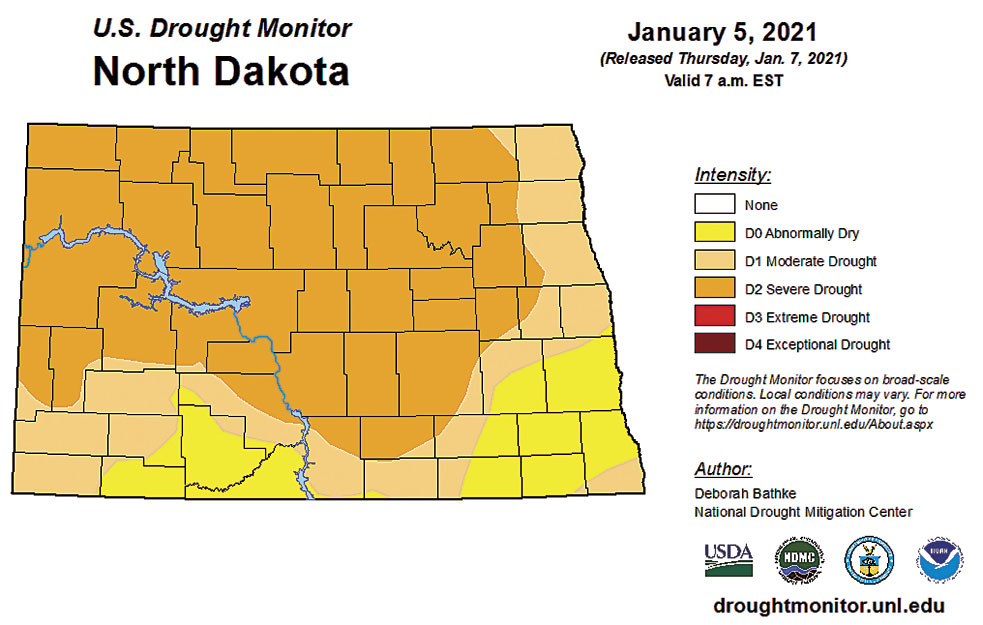Moisture needed across North Dakota
Severe drought over much of state

Dry conditions during the winter season are not particularly unusual in North Dakota, where winter snowfall is relied upon to replenish soil moisture.
So far this winter though, snowfall has been very minimal. The lack of snow cover, following a year of much less than average precipitation, becomes more concerning as the days become longer. Without an ample snowpack to melt and soak into the soil the reversal of dry conditions heading into spring becomes dependant on sufficient rainfall.
The U.S. Drought Monitor rates 62% of the state as being in “severe” drought. The designation includes all of Ward and surrounding counties.
Precipitation in 2020, or rather the lack of it, became an issue mostly after the crop was in the bin last fall. Good spring soil moisture, courtesy of a very wet fall in 2019, and some timely rainfall, resulted in generally good crops throughout the state. Conditions now, however, are very different from a year ago.
Rainfall in 2020 was far short of the long term norm almost everywhere in the state. At the North Central Research and Extension Center south of Minot the yearly precipitation total, a combination of melted snowfall and rain, tallied 11.80 inches, much less than usual. The numbers from the National Weather Service reporting station at the Minot International Airport are equally telling at 10.94 inches, or 6.25 inches less than the 116 year average.
Will the trend continue into the spring planting season? It’s possible. Meteorologists say an indicator of a lengthy drought period can be less than usual precipitation for a period of several months, which certainly was the case in 2019. December finished off 2020 with a mere 0.22 inch of precipitation recorded at the Extension Center, the least since 1936. While that fact may raise a few eyebrows, it must be noted that normal precipitation in December is 0.38 inches. December records range from a high of 2.78 inches in 2009 to a “trace” in 1905 and 1913.
Another indicator of current dry conditions can be found in the water level of lakes, rivers and potholes, all of which are in decline over most of the state. Spring snowmelt is the primary source of replenishment, meaning snow conditions will have to change significantly before temperatures begin to warm in March and April if that is to be realized.
Spring rainfall can also be a savior for dry soil conditions. An inch or so of soaking rain over a wide area would go a long ways toward relieving drought conditions and providing a good boost for spring planting.
